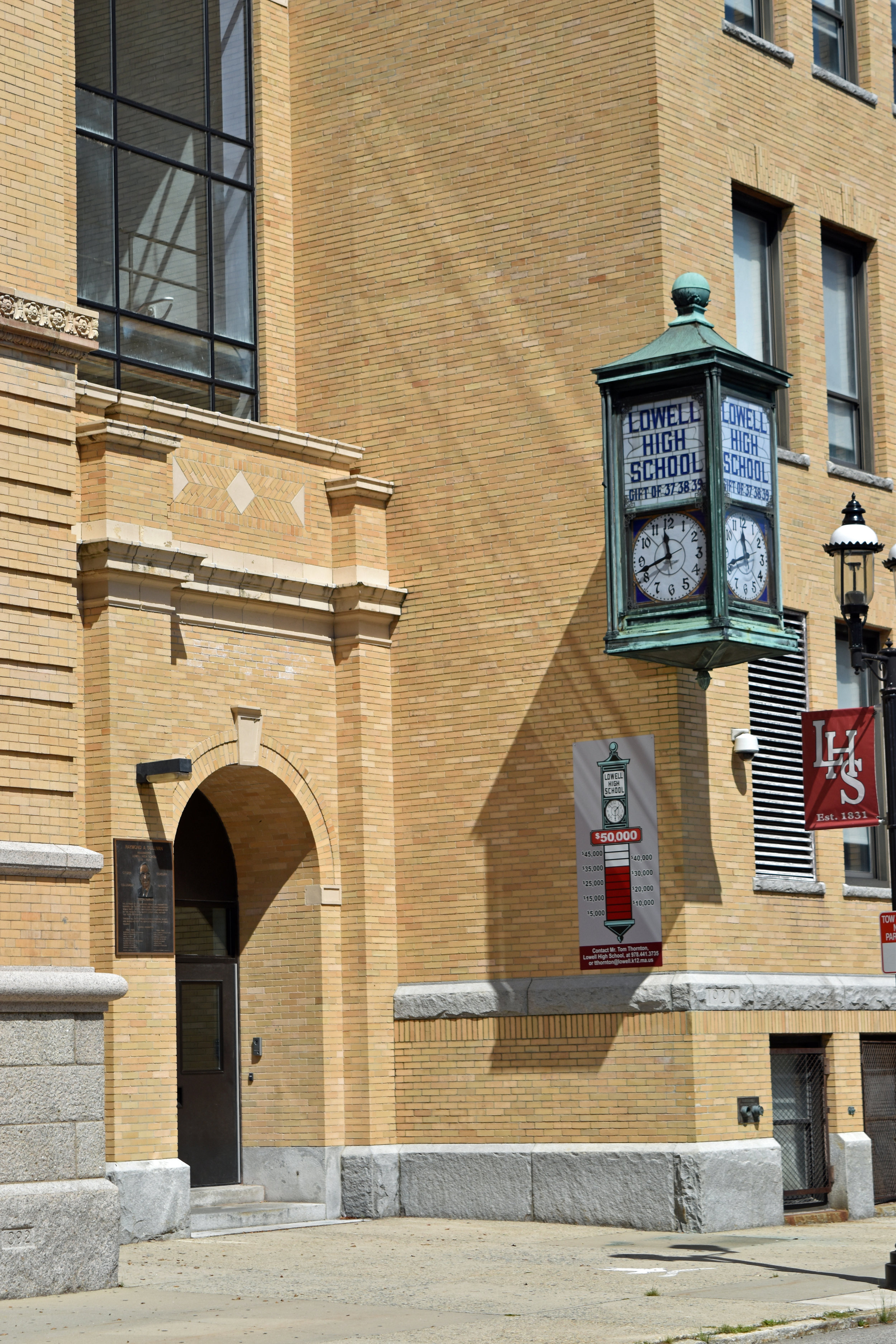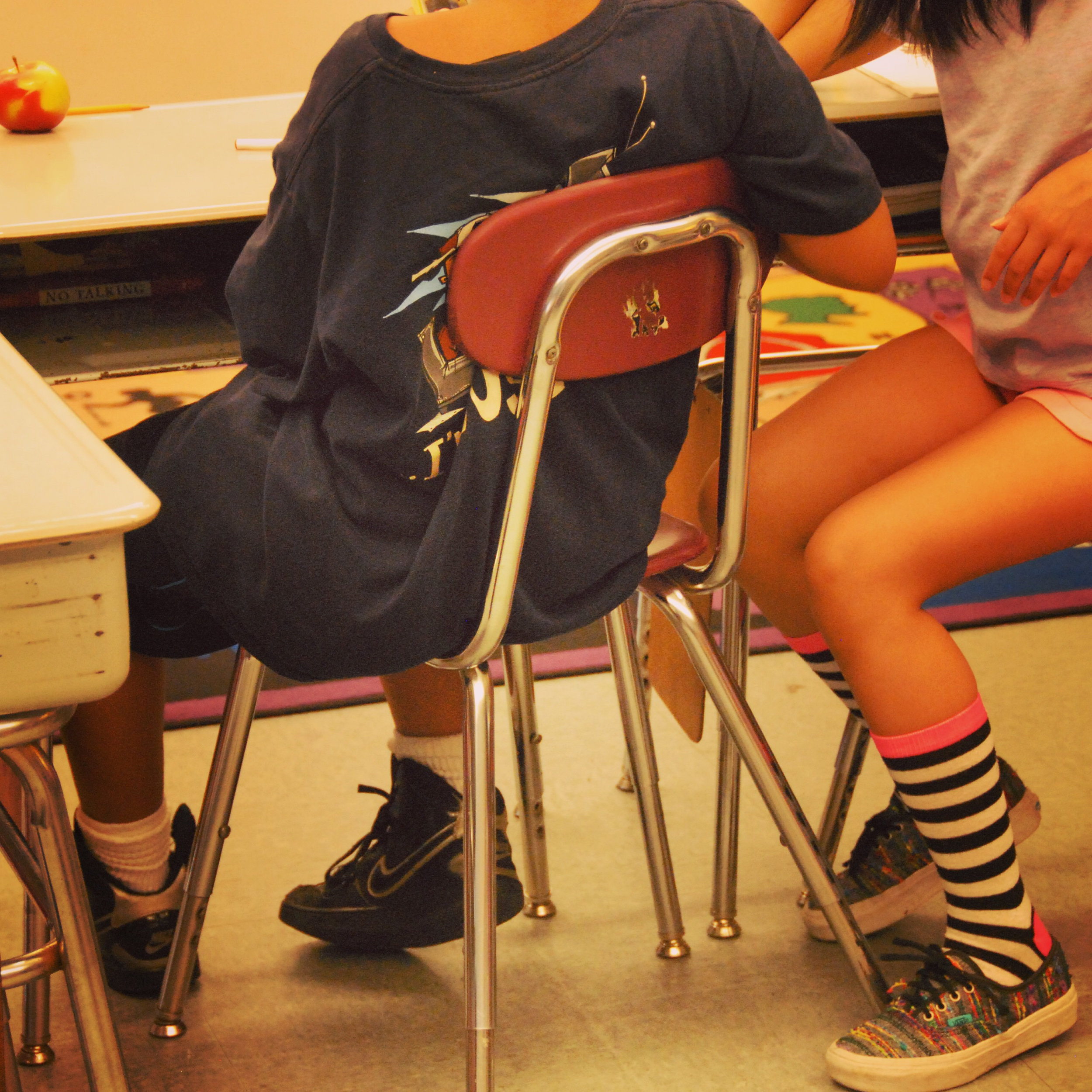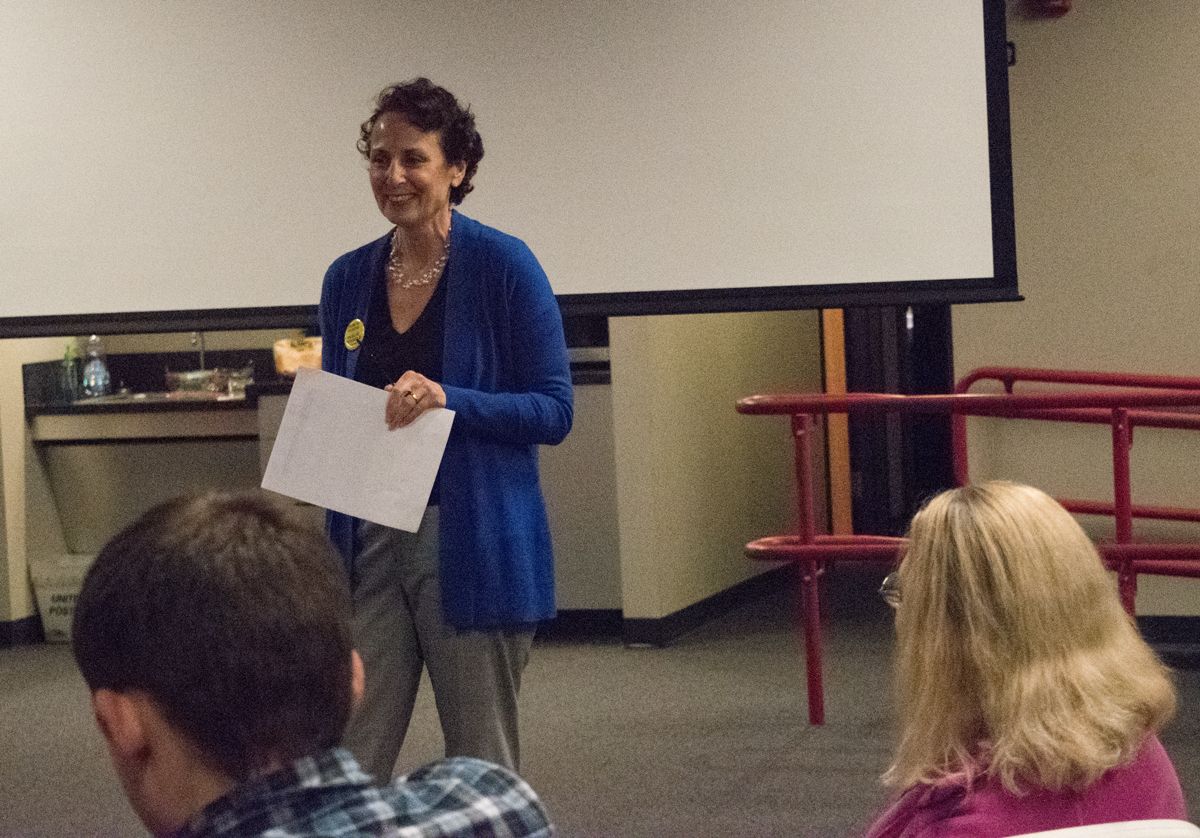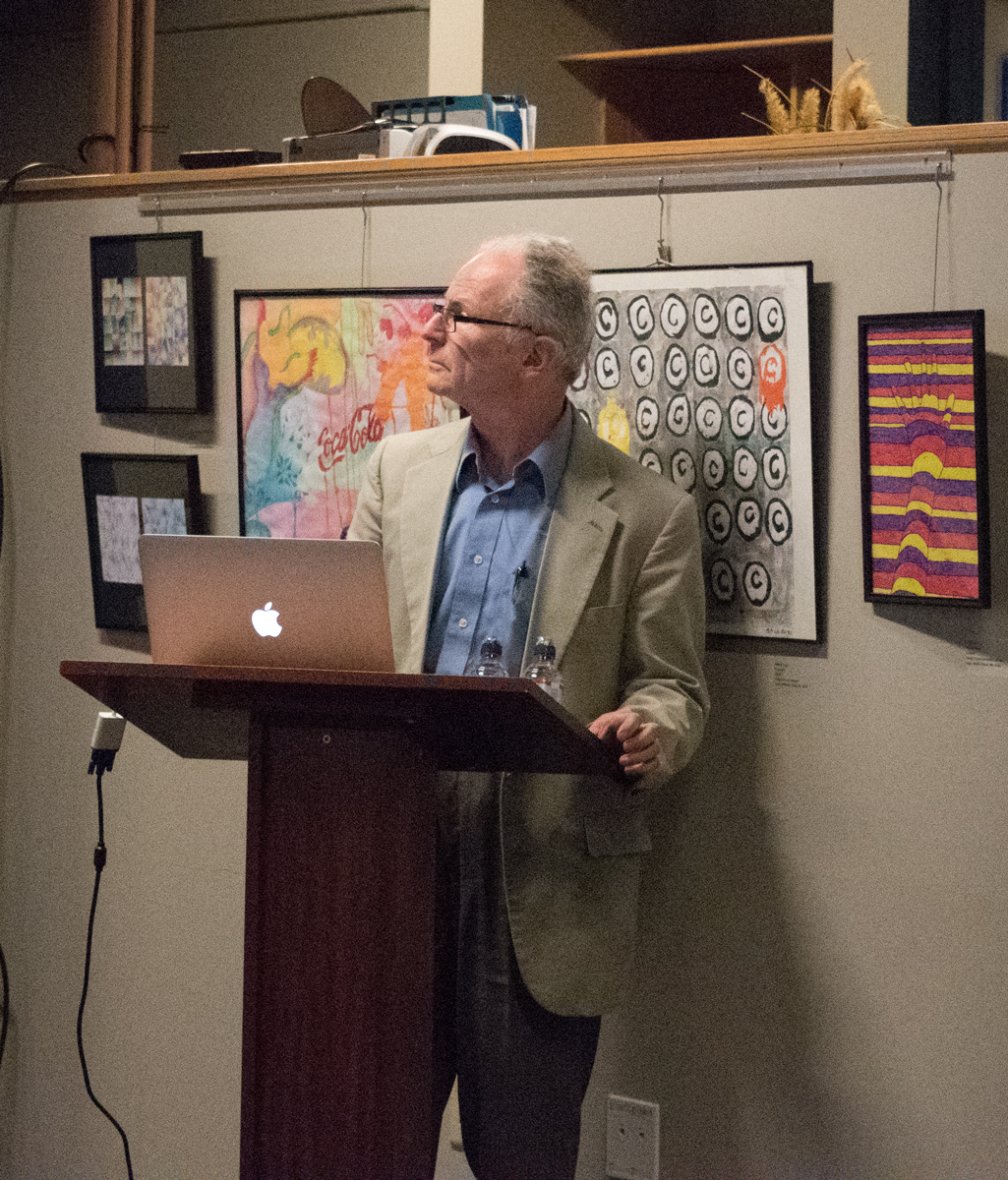School Committee Meeting, 15 June 2016
School Committee Meeting, 15 June 2016 5 present, Mr. Gendron absentThis meeting agenda was packed as the School Committee goes on summer meeting schedules (once each month, 3rd Wednesday) for July and August. After 3 1/2 hours, the Committee also went in to Executive Session for purposes of administrative salary/contract updates (principals, assistant superintendent, superintendent) and salary increases for unaffiliated employees (otherwise not part of a negotiating group). Special Order of BusinessPresentation and public hearing regarding the transformation of LHS Career Academy into an Innovation School. Passes (6 yea, 1 absent) with supportive statements for staff and from UTL.The designation “innovation school”, like a “Horace Mann” school is for schools that are chartered, but still under local control in funding and governance. This is a huge distinction from Commonwealth Charter Schools such as LCCPS and Lowell Collegiate. Both of these schools receive public funding on a per pupil basis but are not governed or answerable to municipal school boards. The innovation school fills a need to continue to reach out to some of our most needy and disenfranchised students with a unique and creative program that will remain under governance of the Lowell Public Schools.Unfinished Business2016/246 transfers of money - sounded as if it mainly was to expend Circuit Breaker funds so that this funding source was trimmed to the allowable limit. Through 3 transfers, the district will be enabled to purchase additional laptop carts (1 cart per grade level per school) and to fund furnishing for the additional Grade 5 classrooms needed to accommodate the bubble at the Middle School.2016/247 Cost of Education for Children Out of District. The amount presented $129,610 is estimated for 2015-16 (final year-end numbers available after financials close in July).Dr. Khelfaoui states that while this number is not for 2016-17, he anticipates the expense for educating 36 OOD students will be “flat” - marginally changed up or down as the number of students will remain the same, just the grade level changing. When questioned as to meeting legalities according to state law regarding students who may also be out-of-state, Dr. Khelfaoui notes that the district can choose to accept such students but that there is no reimbursement from Commonwealth and that the OOD students who also live out-of-state cannot be included in student headcount for purposes of budgeting/funding.Public ParticipationJonathan Richmond, of TAKEOFF Space, an entity formed to encourage talented low-income students to apply to prestigious colleges reads statement relative to the rejection of his proposal for Lowell High students.Laura Ortiz, parent, advocating for more precise and inclusive language in Student Handbook which would include anaphalaxis prevention and procedures/safeguards for all students, not just those specifically hypersensitive to food allergies.Laura Ortiz, parent, advocating that when addressing rezoning, or return to neighborhood schools, that the Committee carefully consider the impact of any attempts to lift the desegragation order. Mr. Gignac clarified his position as looking at rezoning within the context of the desgregation order yet exploring whether some adjustments might be made to address transportation issues/costs and middle school population explosion.Motions2016/251 (Mr, Gignac) report on class sizes for 2016-17. (Note, during discussion of Online Waitlist, Mr. John Descoteaux reports that 56 students are committed to STEM Grade 5 for next year and 11 will be on a waitlist. This effectively ensures that the large Grade 5 class sizes warned about during budget hearings will no longer be a concern).2016/252 (Mr. Gignac) Request superintendent investigate the feasibility of rezoning (see note under Public Participation).2016/254 (Mr. Gignac) report on facility repairs and improvement projects scheduled for this summer.2016/262 (Mr. Hoey) creation of an Early Candidate pool (amended to referral to Personnel Subcommittee).Reports of the SuperintendentThere were 14 reports from the Superintendent ranging from status update on the Massachusetts Teacher Evaluation System to a thorough vetting of updates to School Handbooks.2016/236 Massachusetts Teacher Evaluation update. Follows DESE protocols for evaluations; most are completed including the evaluations of school-wide and district staff. Report to follow (aggregated) in July.2016/260 Washington School. Principal Cheryl Cunningham and her team present what makes this school unique, special and successful. Great presentation on the importance of character education to students.2016/264 Cultural Competency. Along with Head of School Brian Martin, very impressive presentation by Lowell High students explaining the efforts of this group to examine LHS culture in the aftermath of last fall’s racial incident.2016/265 Parent Handbooks LHS changes explained by Dr. Howe; similar changes presented by Ms. Durkin. In light of Parent Laura Ortiz’s suggestions, Ms. Durkin to meet with Health Department.2016/241 Online Waitlist. Parents will be able to look up waitlist status as long as they know their child’s LASID number. Most students know this from memory already as it is used for lunch check-in. Lookups by LASIDs should be quite easy to do and the waitlist will be more transparent to all. More important, the District has a well thought-out plan to check periodically with families to see if they wish to remain on the wait list for a school. Sometimes a child may be placed in a school that was not among the family's listed choices, yet it became a good fit -- and in that case, the wait list entry is moot. 2016/268 Lowell Career Academy Innovation Plan2016/263 Task force planned to address student growth. To convene in early Fall 2016.2016/243 Legal consult (re OOD children). Attorney Hall is working with prior documentation of how/when OOD students were placed in Lowell Schools in preparation for offering legal opinion.2016/259 Report of what civics curriculum materials and programs used in schools.2016/261 STEM efforts at the High School2016/262 All principals have been contacted about school materials ordered for 2016-172016/267 Nondiscrimination on basis of gender identity2016/238 and 2016/239 List of eligible teachers and personnel reportNew BusinessItems accepted and voted favorably include purchases of new food service equipment, financial statements, and 2 donations from the District Attorney’s Office and the Lowell Police Department ($1,000 each).2016/244 Charter School Resolution was formally voted upon. Lowell will join other school districts and the Lowell City Council in support of keeping the current cap on Charter School seats. Mayor Kennedy reports the City Council unanimously voted on a similar motion during last Tuesday's meeting.In my opinion, there are many reasons for insisting on this. The state legislature habitually underfunds the charter school reimbursement account for municipalities. In Lowell, there is a shortfall of over $1.5 million dollars caused by this underfunding - which means that some municipal program is cut or short-funded so that the money assessed the City for charter school students is paid in full. There are many other issues of governance and accountability that divide public schools from Commonwealth Charter Schools. I would urge every voter and taxpayer in Lowell to become familiar with those issues as there will be a ballot initiative question in November.Prior to going to Executive Session, Claire Abrams, Assistant Superintendent, was recognized for her 41 years of service to the Lowell Schools. Claire has been a driving force, particularly in Mathematics, which is where I first met her. With a soft-spoken, calm manner, she has lead many curriculum efforts in Lowell., not the least being toward a mathematics curriculum that is cutting edge. Claire, it was a rare privilege to work with and for you. Your thoughtful leadership will be missed. But you are going to LOVE retirement!Meeting adjourned from Executive Session. Meeting Packet can be found here.
5 present, Mr. Gendron absentThis meeting agenda was packed as the School Committee goes on summer meeting schedules (once each month, 3rd Wednesday) for July and August. After 3 1/2 hours, the Committee also went in to Executive Session for purposes of administrative salary/contract updates (principals, assistant superintendent, superintendent) and salary increases for unaffiliated employees (otherwise not part of a negotiating group). Special Order of BusinessPresentation and public hearing regarding the transformation of LHS Career Academy into an Innovation School. Passes (6 yea, 1 absent) with supportive statements for staff and from UTL.The designation “innovation school”, like a “Horace Mann” school is for schools that are chartered, but still under local control in funding and governance. This is a huge distinction from Commonwealth Charter Schools such as LCCPS and Lowell Collegiate. Both of these schools receive public funding on a per pupil basis but are not governed or answerable to municipal school boards. The innovation school fills a need to continue to reach out to some of our most needy and disenfranchised students with a unique and creative program that will remain under governance of the Lowell Public Schools.Unfinished Business2016/246 transfers of money - sounded as if it mainly was to expend Circuit Breaker funds so that this funding source was trimmed to the allowable limit. Through 3 transfers, the district will be enabled to purchase additional laptop carts (1 cart per grade level per school) and to fund furnishing for the additional Grade 5 classrooms needed to accommodate the bubble at the Middle School.2016/247 Cost of Education for Children Out of District. The amount presented $129,610 is estimated for 2015-16 (final year-end numbers available after financials close in July).Dr. Khelfaoui states that while this number is not for 2016-17, he anticipates the expense for educating 36 OOD students will be “flat” - marginally changed up or down as the number of students will remain the same, just the grade level changing. When questioned as to meeting legalities according to state law regarding students who may also be out-of-state, Dr. Khelfaoui notes that the district can choose to accept such students but that there is no reimbursement from Commonwealth and that the OOD students who also live out-of-state cannot be included in student headcount for purposes of budgeting/funding.Public ParticipationJonathan Richmond, of TAKEOFF Space, an entity formed to encourage talented low-income students to apply to prestigious colleges reads statement relative to the rejection of his proposal for Lowell High students.Laura Ortiz, parent, advocating for more precise and inclusive language in Student Handbook which would include anaphalaxis prevention and procedures/safeguards for all students, not just those specifically hypersensitive to food allergies.Laura Ortiz, parent, advocating that when addressing rezoning, or return to neighborhood schools, that the Committee carefully consider the impact of any attempts to lift the desegragation order. Mr. Gignac clarified his position as looking at rezoning within the context of the desgregation order yet exploring whether some adjustments might be made to address transportation issues/costs and middle school population explosion.Motions2016/251 (Mr, Gignac) report on class sizes for 2016-17. (Note, during discussion of Online Waitlist, Mr. John Descoteaux reports that 56 students are committed to STEM Grade 5 for next year and 11 will be on a waitlist. This effectively ensures that the large Grade 5 class sizes warned about during budget hearings will no longer be a concern).2016/252 (Mr. Gignac) Request superintendent investigate the feasibility of rezoning (see note under Public Participation).2016/254 (Mr. Gignac) report on facility repairs and improvement projects scheduled for this summer.2016/262 (Mr. Hoey) creation of an Early Candidate pool (amended to referral to Personnel Subcommittee).Reports of the SuperintendentThere were 14 reports from the Superintendent ranging from status update on the Massachusetts Teacher Evaluation System to a thorough vetting of updates to School Handbooks.2016/236 Massachusetts Teacher Evaluation update. Follows DESE protocols for evaluations; most are completed including the evaluations of school-wide and district staff. Report to follow (aggregated) in July.2016/260 Washington School. Principal Cheryl Cunningham and her team present what makes this school unique, special and successful. Great presentation on the importance of character education to students.2016/264 Cultural Competency. Along with Head of School Brian Martin, very impressive presentation by Lowell High students explaining the efforts of this group to examine LHS culture in the aftermath of last fall’s racial incident.2016/265 Parent Handbooks LHS changes explained by Dr. Howe; similar changes presented by Ms. Durkin. In light of Parent Laura Ortiz’s suggestions, Ms. Durkin to meet with Health Department.2016/241 Online Waitlist. Parents will be able to look up waitlist status as long as they know their child’s LASID number. Most students know this from memory already as it is used for lunch check-in. Lookups by LASIDs should be quite easy to do and the waitlist will be more transparent to all. More important, the District has a well thought-out plan to check periodically with families to see if they wish to remain on the wait list for a school. Sometimes a child may be placed in a school that was not among the family's listed choices, yet it became a good fit -- and in that case, the wait list entry is moot. 2016/268 Lowell Career Academy Innovation Plan2016/263 Task force planned to address student growth. To convene in early Fall 2016.2016/243 Legal consult (re OOD children). Attorney Hall is working with prior documentation of how/when OOD students were placed in Lowell Schools in preparation for offering legal opinion.2016/259 Report of what civics curriculum materials and programs used in schools.2016/261 STEM efforts at the High School2016/262 All principals have been contacted about school materials ordered for 2016-172016/267 Nondiscrimination on basis of gender identity2016/238 and 2016/239 List of eligible teachers and personnel reportNew BusinessItems accepted and voted favorably include purchases of new food service equipment, financial statements, and 2 donations from the District Attorney’s Office and the Lowell Police Department ($1,000 each).2016/244 Charter School Resolution was formally voted upon. Lowell will join other school districts and the Lowell City Council in support of keeping the current cap on Charter School seats. Mayor Kennedy reports the City Council unanimously voted on a similar motion during last Tuesday's meeting.In my opinion, there are many reasons for insisting on this. The state legislature habitually underfunds the charter school reimbursement account for municipalities. In Lowell, there is a shortfall of over $1.5 million dollars caused by this underfunding - which means that some municipal program is cut or short-funded so that the money assessed the City for charter school students is paid in full. There are many other issues of governance and accountability that divide public schools from Commonwealth Charter Schools. I would urge every voter and taxpayer in Lowell to become familiar with those issues as there will be a ballot initiative question in November.Prior to going to Executive Session, Claire Abrams, Assistant Superintendent, was recognized for her 41 years of service to the Lowell Schools. Claire has been a driving force, particularly in Mathematics, which is where I first met her. With a soft-spoken, calm manner, she has lead many curriculum efforts in Lowell., not the least being toward a mathematics curriculum that is cutting edge. Claire, it was a rare privilege to work with and for you. Your thoughtful leadership will be missed. But you are going to LOVE retirement!Meeting adjourned from Executive Session. Meeting Packet can be found here.
 Perhaps you have never heard of Sir Ken Robinson before today, but I guarantee that if you are willing to spend 20 minutes to play the TED-Ed video found
Perhaps you have never heard of Sir Ken Robinson before today, but I guarantee that if you are willing to spend 20 minutes to play the TED-Ed video found  Play - real, unstructured brain break time - is as important to a child's learning as academic time.So why are school leaders and decision-makers so reluctant to let go and allow more recess? I cringe whenever I hear a school leader lecture that there isn't enough time in a school day to increase play or unstructured time. Two reasons come to mind:
Play - real, unstructured brain break time - is as important to a child's learning as academic time.So why are school leaders and decision-makers so reluctant to let go and allow more recess? I cringe whenever I hear a school leader lecture that there isn't enough time in a school day to increase play or unstructured time. Two reasons come to mind:
 Driven by an $18 million advertising campaign, those in favor of lifting the current cap on charter school seats have launched an all-out effort to increase the number of seats allocated to charter schools. This
Driven by an $18 million advertising campaign, those in favor of lifting the current cap on charter school seats have launched an all-out effort to increase the number of seats allocated to charter schools. This  information regarding how local funding is allocated to charter schools within a district and pointed out that our very own Commonwealth does not always fund (in fact almost never) the state budget adequately to provide the legislated reimbursement to municipal budgets. The trickle down effect of the under-funding is that traditional public school budgets and/or municipalities make up the gap in funds through their own budgets.Thinking about Lowell's budget this current year, about $17 million was paid to charter schools for Lowell students and approximately $3 million was reimbursed by the Commonwealth. That $3 million was about $1.3 million short of the state's responsibility. When there is a shortfall in the reimbursement funding, the local community must fill the gap between assessed amount and state reimbursement. In other words, a traditional public school program might need to be cut or a municipal service eliminated. Cities and towns often find themselves making difficult financial decisions because the Commonwealth does not live up to its promises.According to the DESE website, Lowell's 2016-17 assessment will be based on 1,494 students enrolled in charter schools (15,300 in traditional public schools) which represents 9.8% of the foundation enrollment. A District payment of $18,430,028 will be assessed with the mythical reimbursement of $3,708,525 from the Commonwealth IF charter reimbursements are fully funded in the state budget. And if not.... well Lowell, already tightening fiscal belts and consolidating programs, will need to find the difference somewhere in the City's budget.The Q&A session from the group continued discussion about the impact of the ballot initiative fiscally and educationally. Several raised concerns about increasing charter seats and how that might impact the proposed budget for next fiscal year. There was some surprise to learn that if a student is counted as enrolled in a charter school on October 1, but leaves to return to the city's public schools after that, the per pupil funding stays at the charter school until the next school year.There was interest in continuing informational discussions in the near future.If you, or someone you know would like to continue to be informed about this issue, we invite you to email the local group at lowellcps@gmail.com to be added to the email list. Additional information about Citizens for Public Schools and their advocacy efforts can be found on either their
information regarding how local funding is allocated to charter schools within a district and pointed out that our very own Commonwealth does not always fund (in fact almost never) the state budget adequately to provide the legislated reimbursement to municipal budgets. The trickle down effect of the under-funding is that traditional public school budgets and/or municipalities make up the gap in funds through their own budgets.Thinking about Lowell's budget this current year, about $17 million was paid to charter schools for Lowell students and approximately $3 million was reimbursed by the Commonwealth. That $3 million was about $1.3 million short of the state's responsibility. When there is a shortfall in the reimbursement funding, the local community must fill the gap between assessed amount and state reimbursement. In other words, a traditional public school program might need to be cut or a municipal service eliminated. Cities and towns often find themselves making difficult financial decisions because the Commonwealth does not live up to its promises.According to the DESE website, Lowell's 2016-17 assessment will be based on 1,494 students enrolled in charter schools (15,300 in traditional public schools) which represents 9.8% of the foundation enrollment. A District payment of $18,430,028 will be assessed with the mythical reimbursement of $3,708,525 from the Commonwealth IF charter reimbursements are fully funded in the state budget. And if not.... well Lowell, already tightening fiscal belts and consolidating programs, will need to find the difference somewhere in the City's budget.The Q&A session from the group continued discussion about the impact of the ballot initiative fiscally and educationally. Several raised concerns about increasing charter seats and how that might impact the proposed budget for next fiscal year. There was some surprise to learn that if a student is counted as enrolled in a charter school on October 1, but leaves to return to the city's public schools after that, the per pupil funding stays at the charter school until the next school year.There was interest in continuing informational discussions in the near future.If you, or someone you know would like to continue to be informed about this issue, we invite you to email the local group at lowellcps@gmail.com to be added to the email list. Additional information about Citizens for Public Schools and their advocacy efforts can be found on either their  5 present, Mr. Gendron absent.There have been many reports that this budget season is going to be a tight one. Although the City has committed to increasing their contribution by $1 million, the school department had recently floated a budget total with an additional $1 million deficit gap.Dr. Khelfaoui was on record as against making up the $1 million deficit through cuts to classroom teaching staff (
5 present, Mr. Gendron absent.There have been many reports that this budget season is going to be a tight one. Although the City has committed to increasing their contribution by $1 million, the school department had recently floated a budget total with an additional $1 million deficit gap.Dr. Khelfaoui was on record as against making up the $1 million deficit through cuts to classroom teaching staff ( About 10 years ago, I was introduced to the Responsive Classroom, a program that was highly supported in the school in which I worked. There are many
About 10 years ago, I was introduced to the Responsive Classroom, a program that was highly supported in the school in which I worked. There are many  All members present.This meeting, the first since February 3 due to the Winter vacation week cancellation, was extra lengthy - 37 items. The highlights are posted below.
All members present.This meeting, the first since February 3 due to the Winter vacation week cancellation, was extra lengthy - 37 items. The highlights are posted below.  If you're inside Education, you've probably got a good idea or at least name recognition for
If you're inside Education, you've probably got a good idea or at least name recognition for  MotionsThere were two new motions, both made by Mayor Elliott. Agenda Item 5 (2015/453) addressed some concerns that LHS students appeared uninformed about a Voice of Democracy scholarship opportunity. Concerns were expressed to both Mayor Elliott and Councilor Mercier, and a request for a report on what transpired leading to the lack of LHS participation was requested.Agenda Item 7 (2015/454) sparked some discussion/questions. This motion requested a vote to
MotionsThere were two new motions, both made by Mayor Elliott. Agenda Item 5 (2015/453) addressed some concerns that LHS students appeared uninformed about a Voice of Democracy scholarship opportunity. Concerns were expressed to both Mayor Elliott and Councilor Mercier, and a request for a report on what transpired leading to the lack of LHS participation was requested.Agenda Item 7 (2015/454) sparked some discussion/questions. This motion requested a vote to 

 Elena Aguilar, a contributor at Edutopia.com, describes the following characteristics needed by education teams in this article posted on Edutopia,
Elena Aguilar, a contributor at Edutopia.com, describes the following characteristics needed by education teams in this article posted on Edutopia, 


